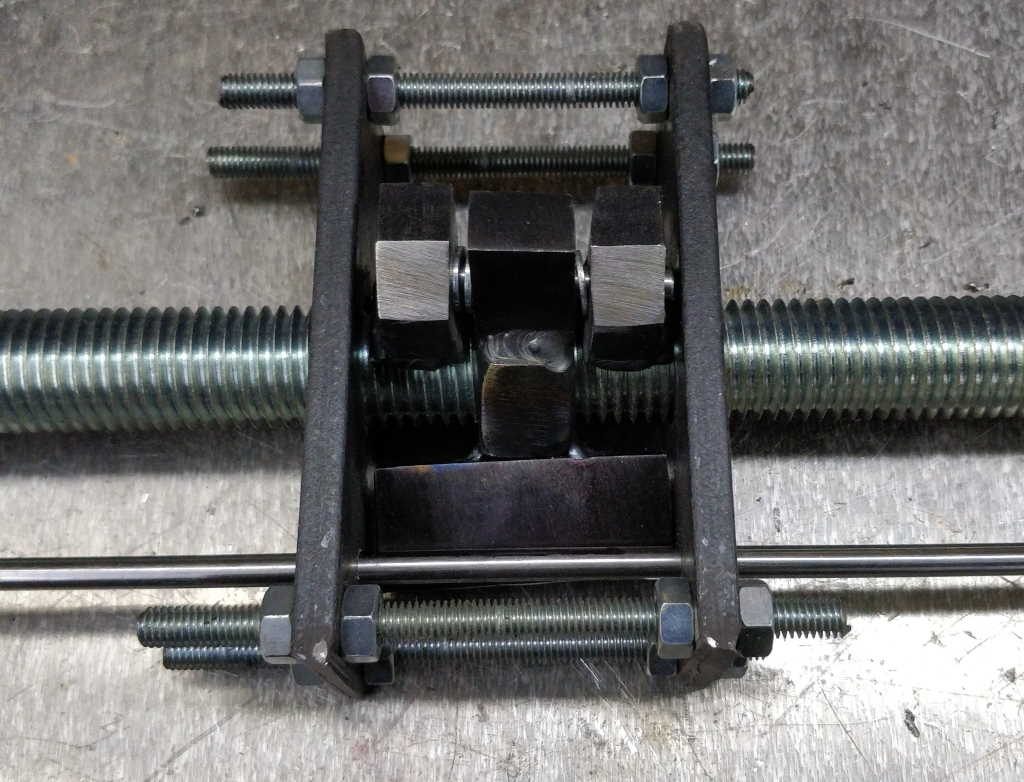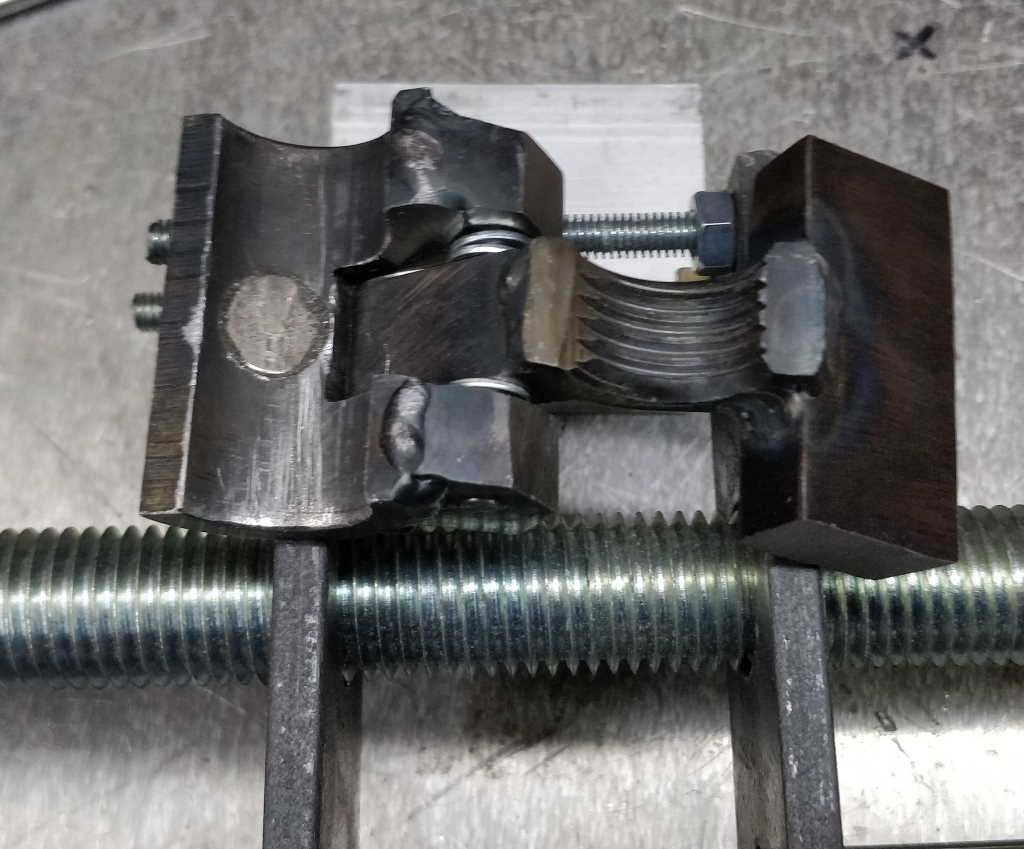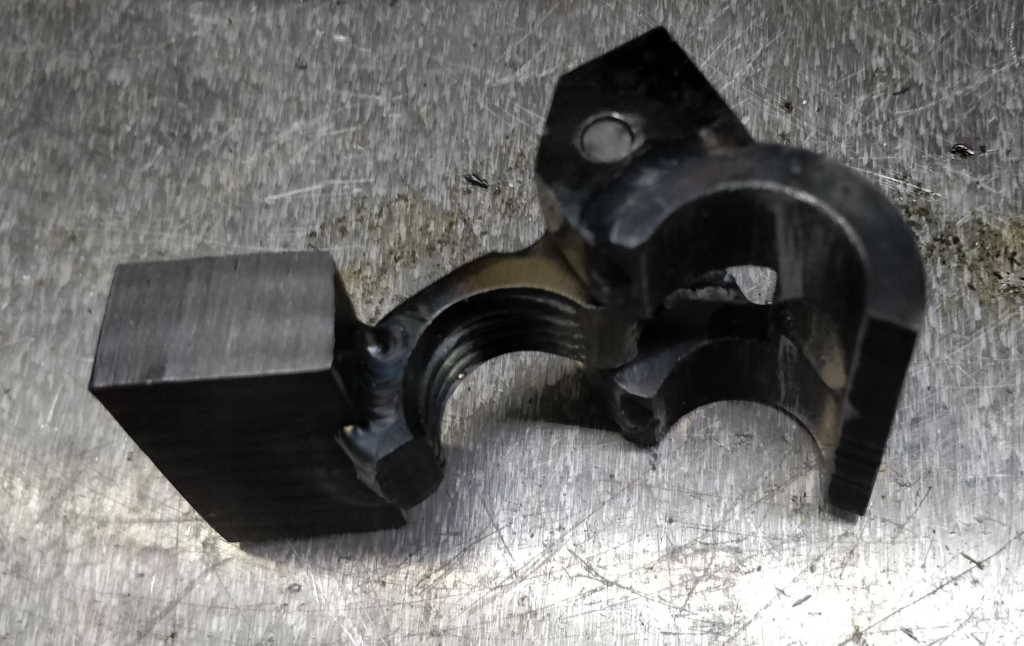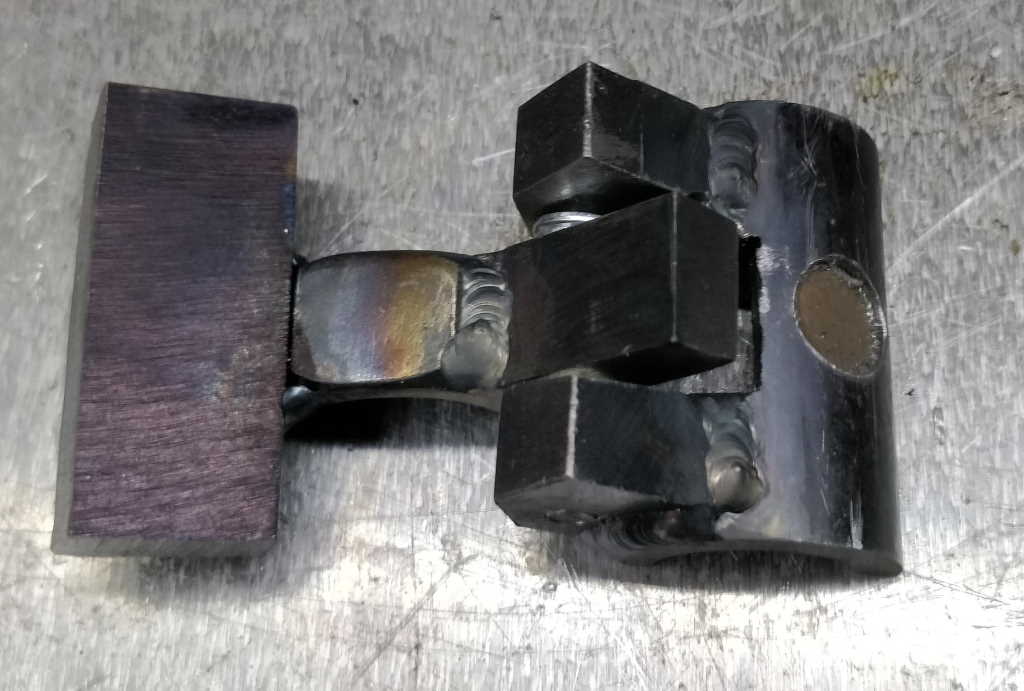Portable Workbench Build Process
Page 3 of 67
Posted 8th March 2021
The first job I did on this (back in January) was to make a prototype of the vice mechanism. The mechanism is based on an idea from a youtube video by Neil Paskin. He didn't provide any dimensions or other details, so I had to work it out for myself (he has also made a plywood version and provided drawings for that, but I wanted to make a metal one). I figured it would be worth testing it out as I was sure it would need some tweaks.
The photo above shows the prototype assembled. I learned quite a few things doing this - hopefully the next version won't need those washers spacing out the lock parts! The final version won't be held together by M6 threaded rod either; that was just for testing.
Here's another view with the lock piece removed:
The threaded part of the mechanism is half of an M20 hex nut, with a big block of steel welded to it on each side. The one on the right-hand side of the photo here presses against the plates when tightening (or loosening) and stops the assembly from twisting. It also presses against the round bar you can see in the first photo and limits the clockwise movement of the mechanism (causing the vice to tighten).
The other half of the lock mechanism is made from half of a bit of 30 mm OD, 20 mm ID tube. It's got a hole cut in it for a magnet and two bits of bar welded to it to act as half of a hinge.
These photos show the lock part on its own. The other block welded to the nut (on the right-hand side of the nut on the last picture) serves two purposes. Firstly it provides the other part of the hinge. Secondly, it presses against the round bar when you turn the mechanism anticlockwise - this causes the nut to lift off the threaded rod, leaving only the tube half engaged (and held on with the magnet).
The result is a vice that you turn half-a-turn anticlockwise and it disengages allowing it to slide in and out freely, but you turn it half-a-turn clockwise and it engages and can be tightened.
Based on a few experiments with the prototype, it seems to work really well and I think it's going to be a lot nicer to use than the separate lever used as a quick release on my Record 52A.
Page 3 of 67
This website is free and ad-free, but costs me money to run. If you'd like to support this site, please consider making a small donation or sending me a message to let me know what you liked or found useful.

 Return to main project page
Return to main project page


